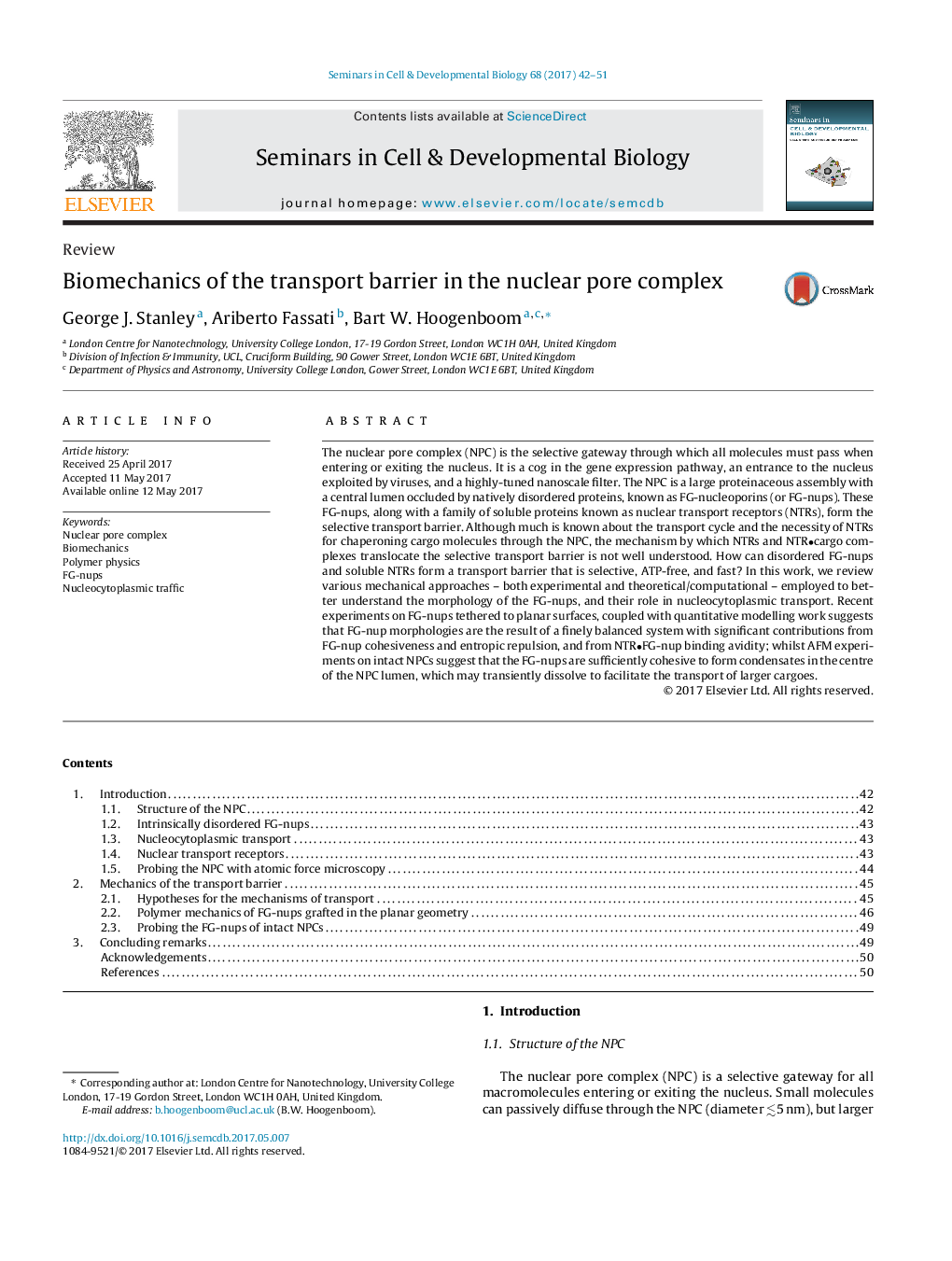| کد مقاله | کد نشریه | سال انتشار | مقاله انگلیسی | نسخه تمام متن |
|---|---|---|---|---|
| 5534846 | 1551355 | 2017 | 10 صفحه PDF | دانلود رایگان |
- Mechanical approaches, both experimental and theoretical/computational, provide a powerful, complementary means for understanding the transport selectivity of the nuclear pore complex.
- The transport barrier depends on both entropic and cohesive aspects of disordered proteins (FG-nups) in the pore lumen.
- Computational models are in best agreement with experiments when the FG-nups are only just sufficiently cohesive to condense towards the centre of the pore channel, thus forming a sealed barrier that can nevertheless facilitate fast transport events.
The nuclear pore complex (NPC) is the selective gateway through which all molecules must pass when entering or exiting the nucleus. It is a cog in the gene expression pathway, an entrance to the nucleus exploited by viruses, and a highly-tuned nanoscale filter. The NPC is a large proteinaceous assembly with a central lumen occluded by natively disordered proteins, known as FG-nucleoporins (or FG-nups). These FG-nups, along with a family of soluble proteins known as nuclear transport receptors (NTRs), form the selective transport barrier. Although much is known about the transport cycle and the necessity of NTRs for chaperoning cargo molecules through the NPC, the mechanism by which NTRs and NTR
- cargo complexes translocate the selective transport barrier is not well understood. How can disordered FG-nups and soluble NTRs form a transport barrier that is selective, ATP-free, and fast? In this work, we review various mechanical approaches - both experimental and theoretical/computational - employed to better understand the morphology of the FG-nups, and their role in nucleocytoplasmic transport. Recent experiments on FG-nups tethered to planar surfaces, coupled with quantitative modelling work suggests that FG-nup morphologies are the result of a finely balanced system with significant contributions from FG-nup cohesiveness and entropic repulsion, and from NTR
- FG-nup binding avidity; whilst AFM experiments on intact NPCs suggest that the FG-nups are sufficiently cohesive to form condensates in the centre of the NPC lumen, which may transiently dissolve to facilitate the transport of larger cargoes.
233
Journal: Seminars in Cell & Developmental Biology - Volume 68, August 2017, Pages 42-51
